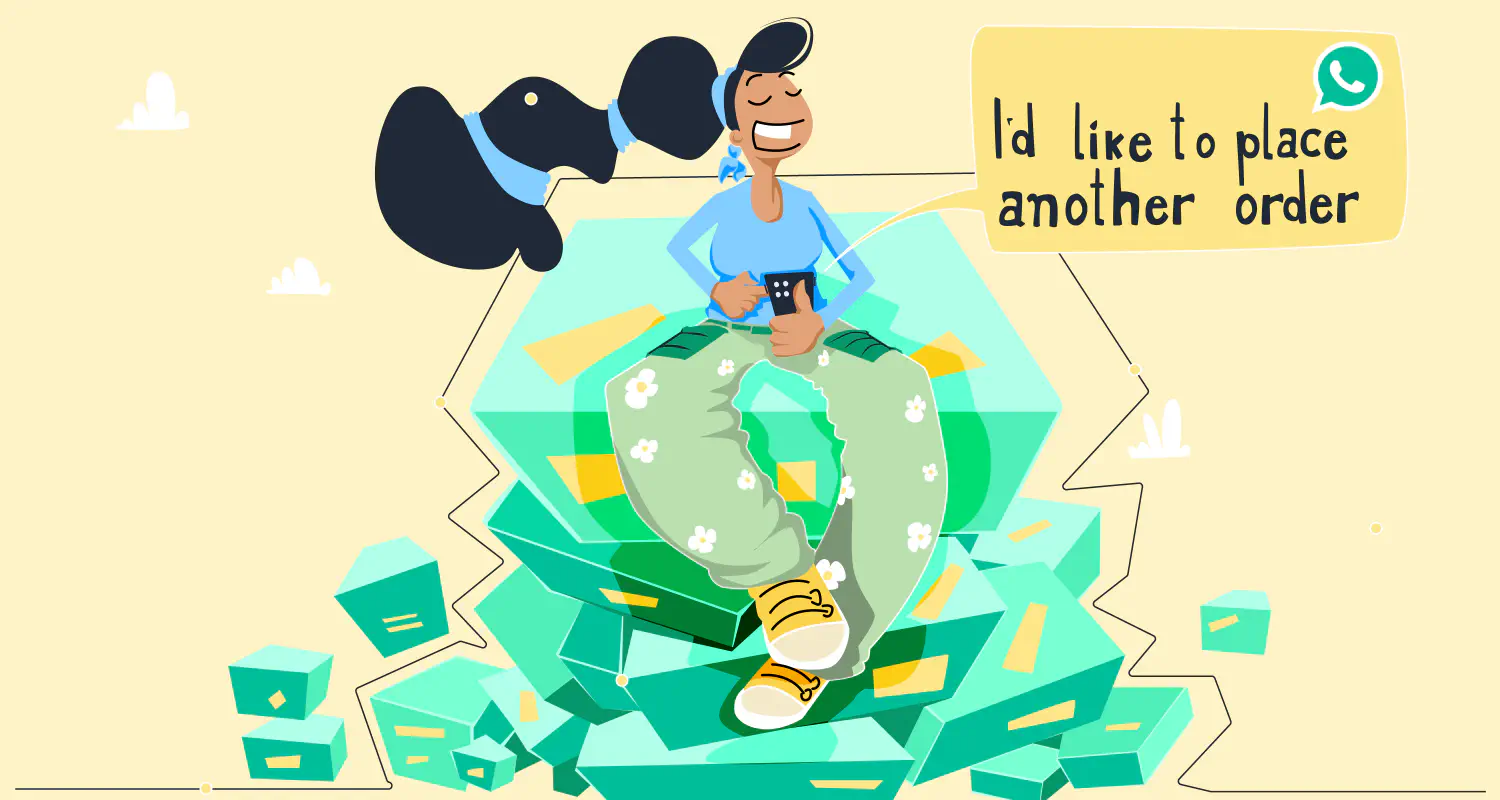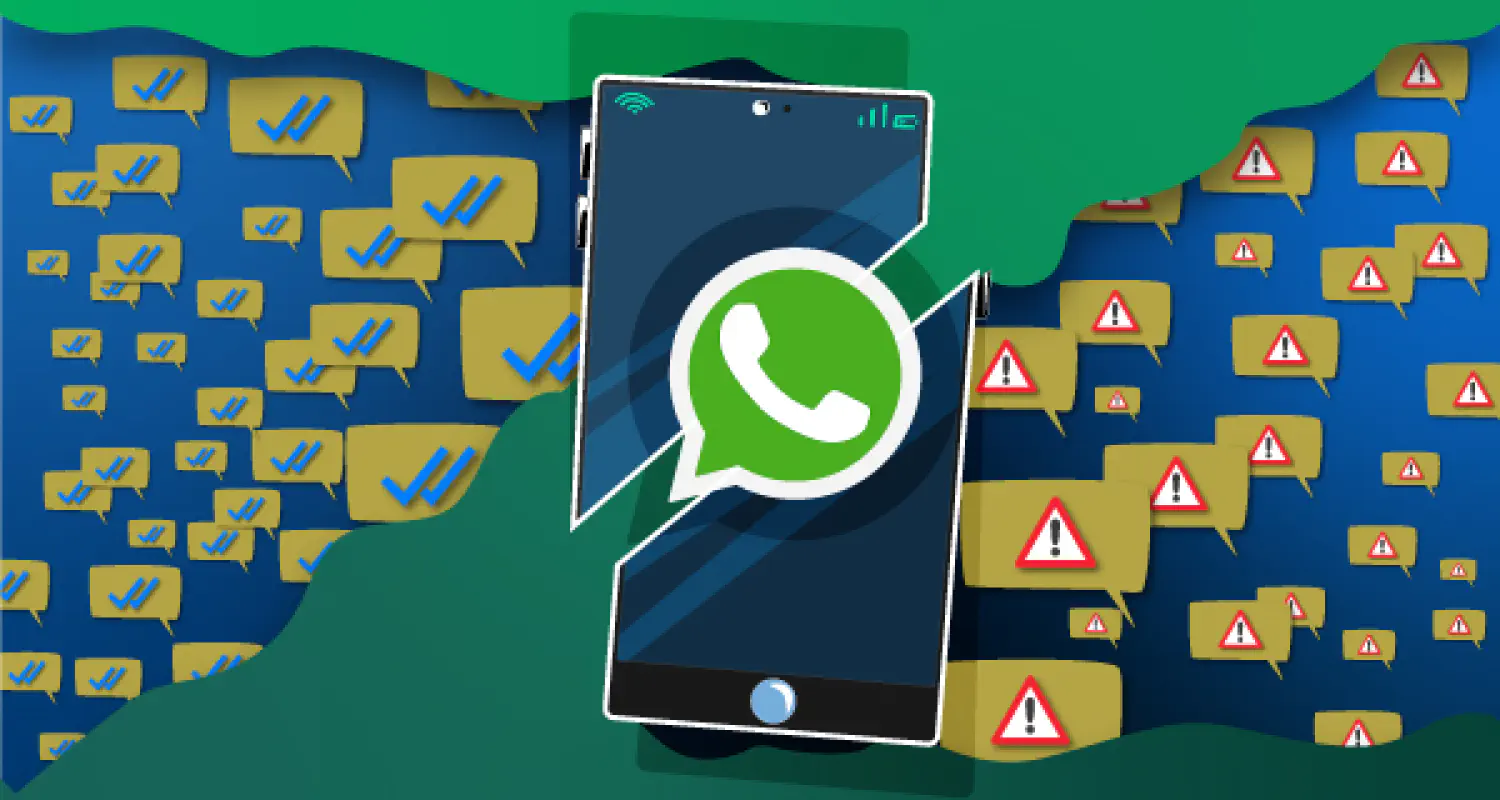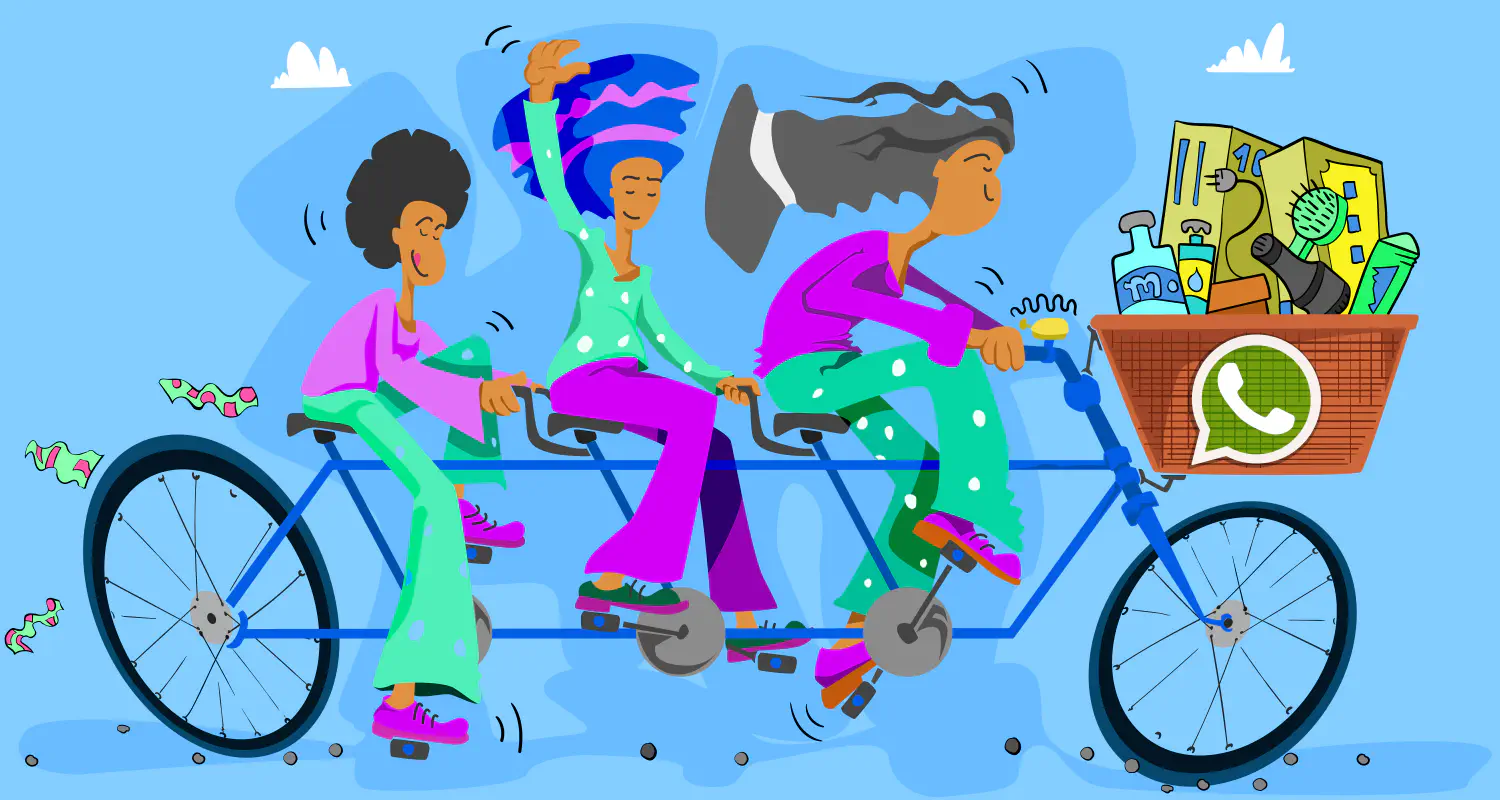How to Segment Your WhatsApp Audience in 2025
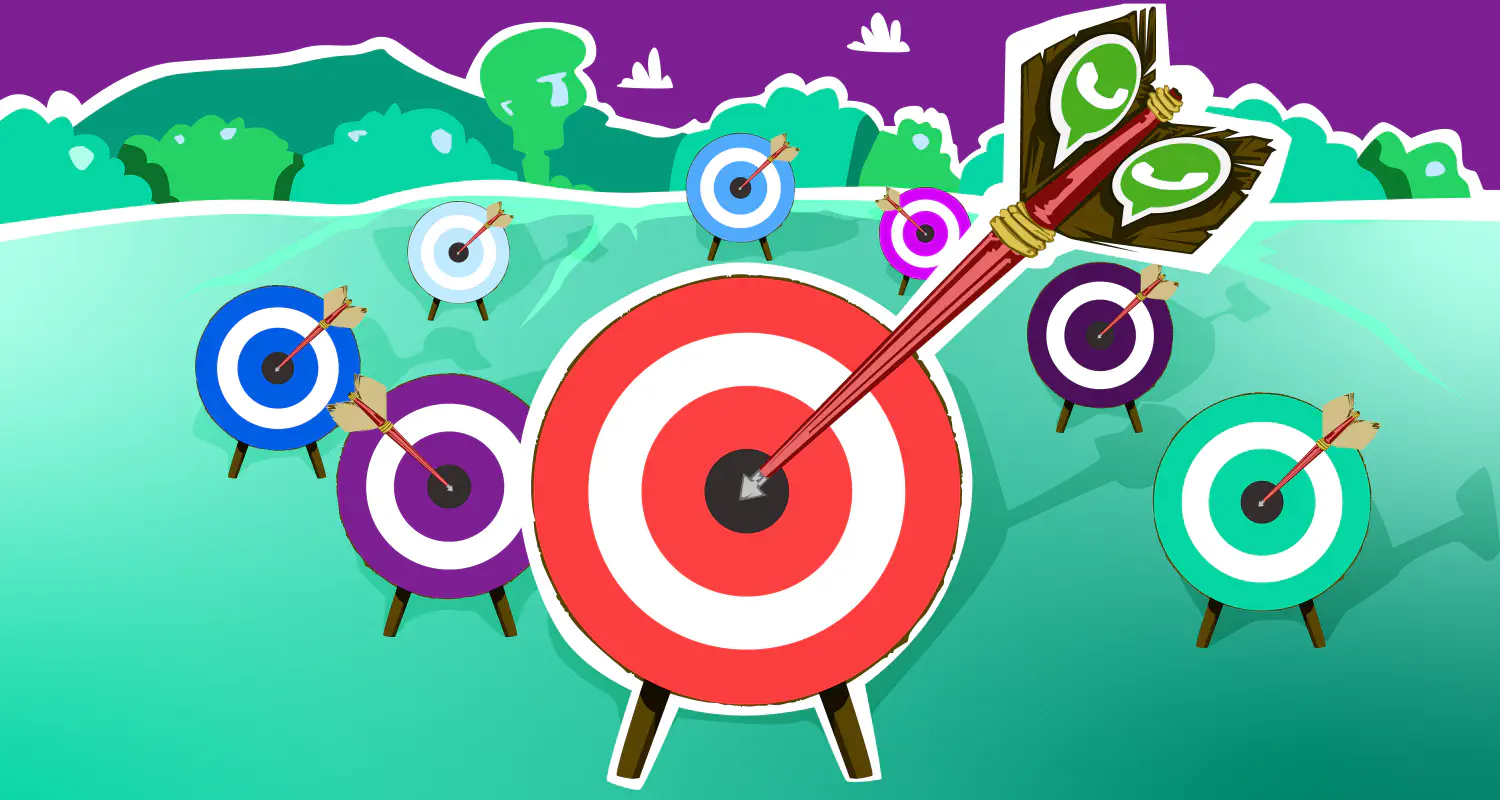
Speed means nothing without relevance. WhatsApp gives your sales and support teams instant access to customers, but without the right segmentation, your messages can feel random or annoying. For growing SaaS companies, that’s a missed opportunity to convert, retain, and support customers at scale.
This guide shows you how to turn your WhatsApp contact list into structured, high-impact segments. You’ll get practical strategies, automation workflows, real examples, and message templates built specifically for B2B SaaS teams. You’ll find segmentation plays that work, plus a clear plan to measure what’s driving replies and results.
What is customer segmentation?
Customer segmentation is the process of organizing your WhatsApp contacts into smaller, more meaningful groups based on shared traits like lifecycle stage, responsiveness, product interest, or company size.
For SaaS sales and support teams, this makes your outreach more relevant and timely. Instead of blasting the same message to everyone, you can follow up with trial users who haven’t completed setup, re-engage leads that went cold, or send renewal reminders to accounts approaching expiration.
Segmentation is essential for automation, improves handover, and helps your team prioritize conversations that move the needle.
Why segmentation on WhatsApp is more powerful than Email and SMS
Marketers have used segmentation for years in email and SMS to personalize campaigns and boost engagement. With WhatsApp, however, you can do it better, faster, and smarter. Here’s why:
- Your messages land directly on their phones, inside WhatsApp.
- Unlike email or SMS, WhatsApp is conversational. You get replies in real-time, not passive opens or clicks.
- When connected to a platform like Rasayel, you can send messages in bulk, sync WhatsApp replies, tags, and conversation history into your CRM for richer segmentation and smarter follow-ups.
- You know who read, who replied, and who ignored. That data can shape your next move.
But WhatsApp also comes with constraints that impact how segmentation is done:
- You can only reply freely within 24 hours of the customer’s last message.
- Outbound messages must use pre-approved templates (unless inside the service window).
- You need explicit consent to message users first, so your segments must be clean and compliant.
These constraints actually support better segmentation. They force your team to be thoughtful, targeted, and structured with every outreach.
What are the different methods of market segmentation?
Before you segment your WhatsApp contacts, it helps to understand the five core ways marketers group audiences. These methods aren’t specific to WhatsApp, but they form the foundation for building targeted, high-converting segments in any channel.
Behavioral
This method groups people based on how they interact with your product or brand. It includes things like purchase behavior, onboarding progress, engagement with WhatsApp messages, and responsiveness. For SaaS companies, this is especially useful for triggering follow-ups or reactivation messages.
Example: Segmenting trial users who haven’t finished setup or customers who haven’t replied in over 14 days.
Psychographic
Psychographic segmentation focuses on traits like values, interests, and attitudes. It’s harder to track directly on WhatsApp, but chatbot flows or lead forms can help collect this kind of data.
Example: Identifying users who value automation, based on chatbot responses like “I’m looking to save time with workflows.”
Demographic
This includes basic personal attributes such as age, gender, education, or job role. While not always relevant in B2B SaaS, role-based segmentation (e.g. sales vs. marketing) can shape how you communicate and what message you send.
Example: Sending sales-focused messages to users who identify as account executives.
Geographic
This categorizes users based on location: city, region, country, or time zone. On WhatsApp, this helps with regional campaigns, local offers, or timing messages based on working hours.
Example: Sending a local event invitation only to contacts in São Paulo or Dubai.
Firmographic
Firmographics are like demographics, but for companies. This includes industry, company size, revenue, or tech stack. It’s one of the most useful segmentation types for B2B SaaS because it directly shapes messaging, use cases, and sales strategy.
Example: Highlighting a fintech case study to contacts in the financial sector or offering volume pricing to companies with over 100 employees.
5 segmentation rules that matter on WhatsApp
Customer segmentation on WhatsApp combines classic marketing segments like demographics, firmographics, and behavioral traits with real-time behaviors, product usage, and operational triggers. This makes your outreach faster, smarter, and more personalized without requiring manual work from your team.
Below are five segmentation dimensions that work especially well for B2B SaaS teams using WhatsApp.
| Segmentation type | What it captures | When to use it | Example use case |
|---|---|---|---|
| Lifecycle and funnel stage | Contact’s stage in the customer journey | To guide leads toward conversion or expansion | Send onboarding help to new users or upsell existing customers |
| Engagement and responsiveness | Level of interaction with WhatsApp messages | To re-engage inactive users or prioritize active ones | Trigger follow-ups for leads who haven’t replied in 14 days |
| Intent and content interaction | What the contact is interested in or clicked on | To tailor offers and route to sales faster | Route users who clicked “pricing” to an AE with a tailored message |
| Product usage and support signals | In-app activity or support ticket behavior | To prompt setup, upsell features, or check in proactively | Nudge trial users who haven’t completed onboarding |
| Firmographics and persona | Company data and role information | To adapt messaging to industry or job function | Send a SaaS case study to sales directors at mid-sized tech companies |
1. Lifecycle and funnel stage
Segmenting by lifecycle stage helps your team move leads through the funnel with targeted messages and timely nudges. It helps define what to say and when. Each stage can trigger a different sequence, synced directly from your CRM.
Instead of sending the same message to everyone, you can focus on turning MQLs into SQLs, reviving cold leads, or expanding current accounts.
Use CRM and chatbot data to identify where the contact is in the journey:
- CRM lifecycle stage (HubSpot, Salesforce)
- Tags (e.g.
lead,customer,renewal_due) - WhatsApp chatbot answers (e.g. “I’m evaluating”)
Sample rules/logic:
IF lifecycle_stage = "MQL" AND last_reply_days 5 THEN trigger warm-up sequence
IF lifecycle_stage = "Customer" AND plan_type = "Basic" THEN trigger upsell message
Workflow snippet:
- Trigger: CRM stage updates to MQL
- Entry: Enters lead nurturing sequence
- Exit: Replies or becomes SQL
- Escalation: If no reply in 3 days, reassign to SDR
Template example:
“Hi {{first_name}}, just checking in. Are you still exploring how {{product}} might help with [problem]? Happy to share a quick demo if you’d like.”
2. Engagement and responsiveness
This dimension tracks how actively a contact is engaging with your WhatsApp messages by monitoring metrics like last reply time, read receipts, response frequency, and interaction with buttons or flows. It’s useful for identifying cold leads, active prospects, or customers who go quiet after onboarding.
Track activity from WhatsApp messages and replies:
- Last reply timestamp, read receipts
- Tags:
unresponsive,hot_lead,ghosted - Completed or skipped bot flows
Sample rules/logic:
IF last_reply_days 14 THEN trigger reactivation
IF responded_in_last_24h = true AND conversation_open = true THEN send follow-up
Workflow snippet:
- Trigger: 14 days of no reply
- Entry: Enters reactivation sequence
- Exit: Replies or unsubscribes
- Escalation: Notify rep if still no reply after 2 messages
Template example:
“We haven’t heard from you in a while. Should we keep this conversation open? Let us know if you’d still like help with {{topic}}.”
3. Intent and content interaction
Segmenting by intent gives you the ability to follow up based on what someone showed interest in—pricing, features, integrations, and more. It’s useful for prioritizing leads and shaping conversations around what actually matters to them.
Use intent signals from clicks, replies, and chatbot inputs:
- Clicks on buttons in WhatsApp templates
- Chatbot answers (e.g. “Show me pricing”)
- CRM fields (e.g.
interested_feature) - Rasayel tags:
asked_about_demo,downloaded_guide
Sample rules/logic:
IF intent = "pricing" AND last_reply_days < 3 THEN assign to AE
IF clicked_feature = "automation" THEN send deep-dive template
Workflow snippet:
- Trigger: Click on “Pricing” button in a WhatsApp flow
- Entry: Route to sales and send follow-up
- Exit: Agent replies manually
- Escalation: Manager notified if no response in 24 hours
Template example:
“Thanks for checking out our pricing. Want to chat about which plan fits your use case best?”
4. Product usage and support signals
This segment tracks what users do inside your product or what they struggle with. It helps trigger onboarding nudges, upsell plays, or proactive support.
Pull usage and support data from your product or helpdesk:
- Product usage data via webhook (e.g. setup incomplete)
- Support tickets (Rasayel plus helpdesk integration)
- Tags:
trial_stalled,onboarding_pending,power_user
Sample rules/logic:
IF onboarding_step = "not completed" AND account_age 5 days THEN send reminder
IF submitted_ticket 2 times in 7 days THEN offer CS call
Workflow snippet:
- Trigger: Onboarding not finished in 5 days
- Entry: Enters “complete your setup” sequence
- Exit: Completes setup or replies
- Escalation: Agent assigned if message is ignored
Template example:
“Just one more step to get the most out of your trial: connect your CRM. Need help?”
5. Firmographics and persona
Segmenting by firmographic data like company size, industry, and role helps you tailor your pitch. You wouldn’t send the same message to a solo founder and a sales director at a 200-person company.
Segment based on company and role details:
- CRM fields (industry, job title, company size)
- Rasayel chatbot (e.g. “What’s your role?”)
- HubSpot mapping with WhatsApp conversations
Sample rules/logic:
IF role = "Sales Director" AND industry = "SaaS" THEN send case study for SaaS sales teams
IF company_size 100 THEN offer multi-seat demo
Workflow snippet:
- Trigger: Role collected via chatbot
- Entry: Segment tagged
sales_leader - Exit: Replies or views demo link
- Escalation: Assigned to enterprise AE
Template example:
“We just helped a sales team at {{similar_company}} cut WhatsApp response time by 43 percent. Want to see how?”
How to plan personalized WhatsApp campaigns
Once your segments are defined, the next step is to act on them with targeted campaigns. The goal is to send the right message to the right group at the right time, based on their behavior, stage, or intent.
In Rasayel, you can run this entire process from start to finish. You can create a message template, submit it for WhatsApp approval, apply tags to define your audience, and send the broadcast. Once the initial message is delivered, you can continue the conversation using an automated sequence with follow-ups with delays, exit rules, and handover to a human if needed.
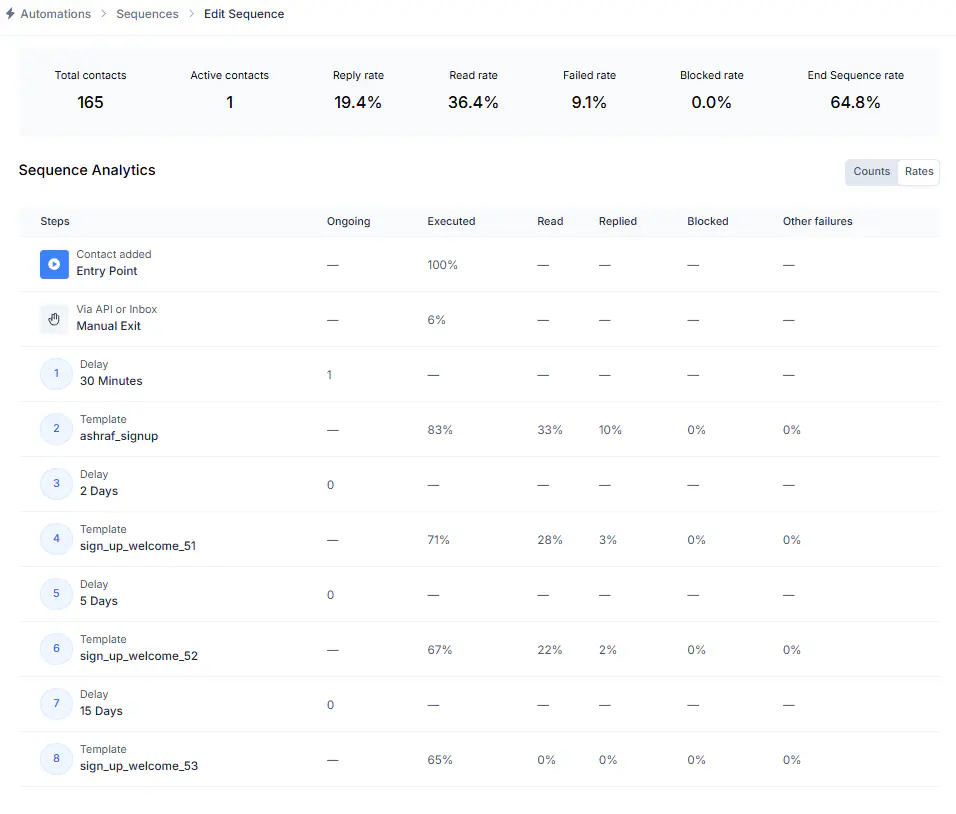
Here are four campaigns that work well for SaaS sales and support teams.
Onboarding nudges for new customers
New users run into friction during setup. If you don’t follow up quickly, the trial goes cold, and they never convert. This campaign helps guide them through the first few steps while the intent is still fresh. You can improve activation rates and reduce early churn by sending short nudges with useful links or help options.
Segment examples:
- Lifecycle = “Customer”
- Onboarding not completed after 3 days
- Trial users with no product activity
Workflow overview:
- Trigger: Tagged as trial user
- Sequence:
- Welcome message with setup link
- Day 3 reminder
- Day 5 offer to help or schedule a call
- Exit: Customer completes setup or replies
- Escalation: Assign to agent if ignored
Template example:
“Hi {{first_name}}, we noticed you haven’t finished setting up your account. Here’s a quick guide to help. Let us know if you’d like a hand.”
Reactivation flows for inactive leads or customers
This campaign helps you restart the conversation with leads or customers who’ve gone quiet. It separates the truly cold from the ones who just need a nudge. If there’s no reply after a few messages, the sequence exits or flags the contact for cleanup.
Segment examples:
- Last reply over 14 days ago
- No activity since onboarding
- Lifecycle = MQL with no progression
Workflow overview:
- Trigger: No reply in 14 days
- Sequence:
- Soft check-in
- Relevant case study or offer
- Final nudge or opt-out
- Exit: Replies or unsubscribes
- Escalation: Notify rep for manual review
Template example:
“Hi {{first_name}}, are you still exploring {{product}}? If now isn’t the right time, feel free to let us know and we’ll follow up later.”
Upsell or expansion based on usage
With this campaign, you can identify customers with upgrade potential and offer the next plan or feature based on real usage. This approach is much more effective than generic upselling.
Segment examples:
- Using 80% of plan limits
- Plan = Basic and team size 5
- Power user of key features
Workflow overview:
- Trigger: Usage milestone reached
- Sequence:
- Upgrade suggestion
- Follow-up with benefit or comparison
- Exit: Customer replies or upgrades
- Escalation: Assign to AE for deal follow-up
Template example:
“Looks like your team is getting real value from {{feature}}. Want to explore what you can unlock with the next plan?”
Renewal reminders and success check-ins
Send reminders and check-ins before the contract ends. It keeps the relationship warm and gives you time to fix problems before they become reasons to churn.
Segment examples:
- Renewal due in 30 days
- Active support tickets
- High-value customer with low activity
Workflow overview:
- Trigger: Renewal date approaching
- Sequence:
- Renewal reminder or success check-in
- Offer to schedule a call or resolve issues
- Exit: Customer replies or confirms renewal
- Escalation: Assign to account manager
Template example:
“Your renewal is coming up soon. Want to book a quick check-in to make sure everything is working the way you need it to?”
Conclusion
Segmentation on WhatsApp helps your team focus on the right people with the right messages, using data you already have, like lifecycle stage, engagement, intent, usage, or company profile.
Unlike email or SMS, WhatsApp requires structure. You need to work within opt-in rules, message templates, and the 24-hour window. But these limits are what make targeted messaging even more important.
With Rasayel, you can create approved templates, tag contacts, send targeted broadcasts, and set up sequences to follow up automatically. This allows you to move faster, reduce manual work, and keep conversations relevant at every stage of the customer journey.
Frequently Asked Questions
- Define your overall market or audience.
- Identify the criteria you’ll use to segment (e.g. lifecycle, engagement, firmographics).
- Collect relevant data from WhatsApp, CRM, and chatbot interactions.
- Create clear, rule-based segments.
- Profile each segment to understand their needs or behavior.
- Choose which segments to prioritize in your campaigns.
- Launch your messages, track performance, and refine as needed.
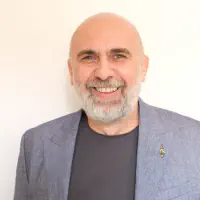
Miodrag is a seasoned WhatsApp marketing expert with over 15 years of experience in B2B sales and communication. Specializing in the use of WhatsApp Business API, he helps businesses use WhatsApp’s marketing features to grow their sales and improve customer engagement. As one of the early adopters of WhatsApp Business, Miodrag has a deep understanding of its tools and strategies, making him a trusted authority in the field. His insights have helped many businesses with their communication strategies to achieve measurable results.

